Throughout her 70-year reign, the late Queen of England, Elizabeth II, always knew how to stand out with her iconic fashion style. However, the most memorable of all was the gown she wore at her coronation in 1953.
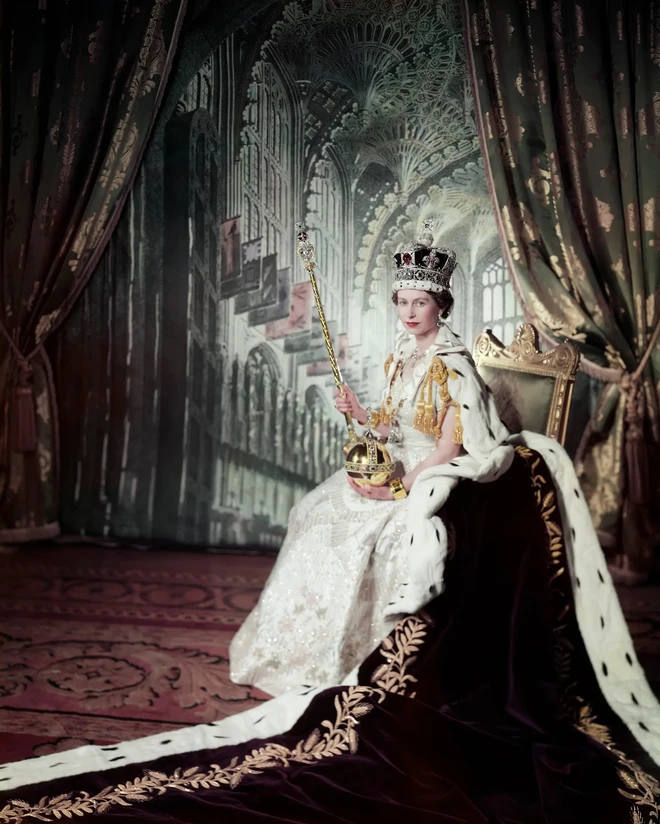
On June 2, 1953, Queen Elizabeth II was coronated. Along with the grandeur and solemnity of the occasion, the gown she wore made a strong impression and became a historic proof, as it was the first time in the world that a monarch’s coronation ceremony was televised live.
According to Page Six, the dress was created by Norman Hartnell, a renowned London-based designer who specialized in serving royal women in the family.
The white gown was intricately embroidered and beaded to create a sparkling visual effect in the solemn setting of Westminster Abbey. What’s more, it was not only designed to make the new queen shine, but also included important details that reflected her connection to the mission entrusted to her.
The gown was created by the wedding dress designer for Queen Elizabeth II.
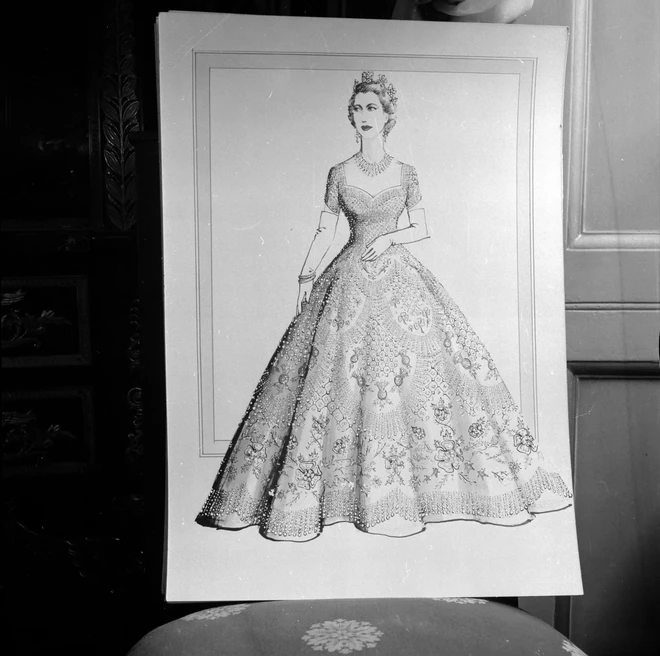
Queen Elizabeth II wore a gown designed by Norman Hartnell for her wedding to Prince Philip on November 20, 1947. Therefore, it is not surprising that she sought out her favorite fashion expert for the most important occasion as heir to the throne.
According to the Royal Collection Trust, the Queen was presented with nine design options. In the end, she chose the eighth design and made some adjustments. She suggested adding embroidered motifs in various colors instead of all silver, which would enhance the uniqueness of the dress.
Based on the Queen’s request, Hartnell created the final gown from white silk, along with gold thread, diamonds, and pearls.
Each motif on the dress had a symbolic meaning.
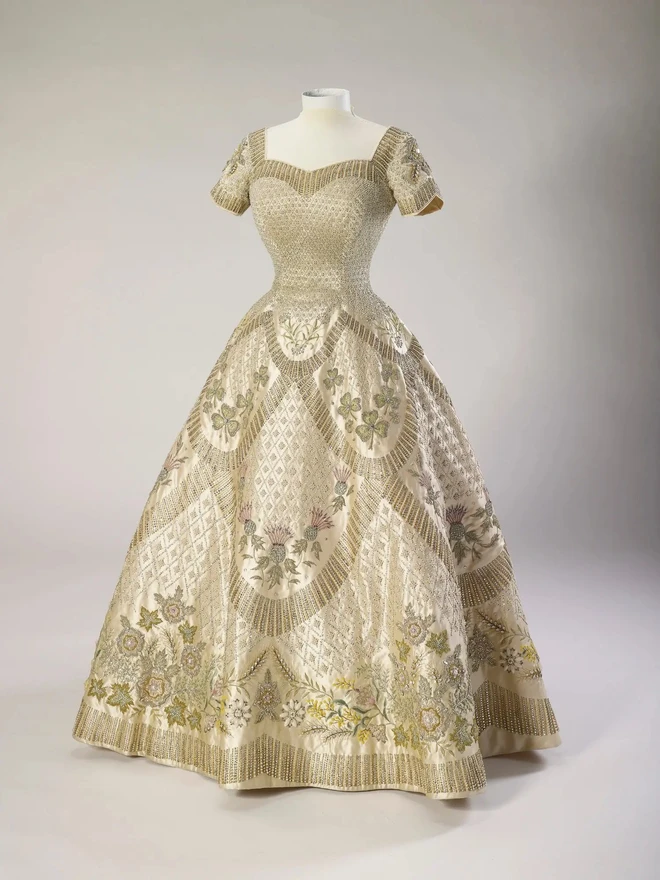 Queen Elizabeth II requested that the symbols of the United Kingdom and the Commonwealth be embroidered onto the gown (Photo: Royal Collection Trust).
Queen Elizabeth II requested that the symbols of the United Kingdom and the Commonwealth be embroidered onto the gown (Photo: Royal Collection Trust).
According to royal fashion expert Rosie Harte, the original design by Hartnell featured symbols of the United Kingdom, but Queen Elizabeth II felt it was not enough. She requested that the symbols of all the countries in the Commonwealth be included.
Harte said that the initial sketches included the English rose, Scottish thistle, Irish shamrock, and Welsh daffodil. The Queen requested that the daffodil be replaced with the leek – the national emblem of Wales.
“Then she requested that all the countries in the Commonwealth be represented in the embroidery. This gesture speaks to the Queen’s concern, as well as her seriousness in fulfilling her role as monarch and head of state,” Harte said.
Hartnell fulfilled the Queen’s wishes by embroidering the symbols onto the hem of the gown, including the Australian wattle, Canadian maple leaf, Indian lotus, and New Zealand silver fern.
A hidden lucky charm
Among the intricate beading on the gown is a symbol that few people notice, including the Queen.
Harte revealed that the designer hid a lucky charm on the dress in the form of a four-leaf clover.
According to the fashion expert, the symbol of Ireland is located where the Queen’s left hand covers it. It was created to bring luck to the wearer, facilitating the Queen’s successful completion of the long and complex ceremony.
Caroline de Gautaut, Deputy Surveyor of the Queen’s Works of Art, told People that Queen Elizabeth II may not have been aware of the lucky charm because the symbol reflected the designer’s personal thoughts.
The gown also had a matching robe attached to it.
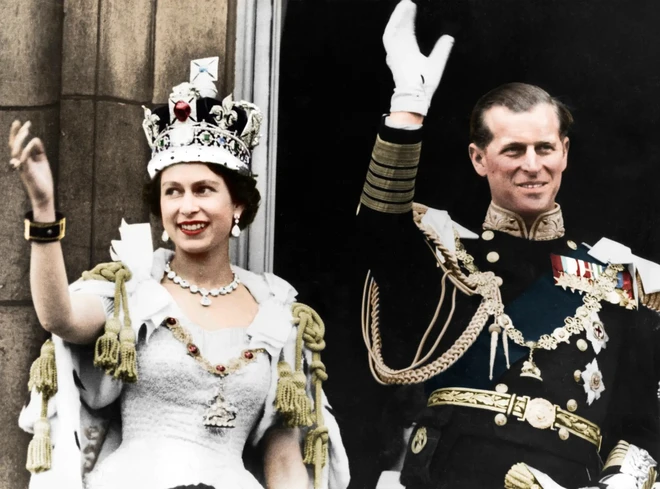
Royal historian Jessica Storoschuk told Page Six Style that Queen Elizabeth II entrusted the Royal School of Needlework in England to decorate the purple velvet robe she wore after the ceremony at Westminster Abbey.
According to Storoschuk, the lavish purple velvet robe was adorned with Canadian ermine fur and took over 3,000 hours to complete the gold details.
More than 12 seamstresses worked in shifts from 7 a.m. to 10 p.m. every day for three months. The team spent over 3,500 hours to finish the robe.
The Queen wore the gown six times again.
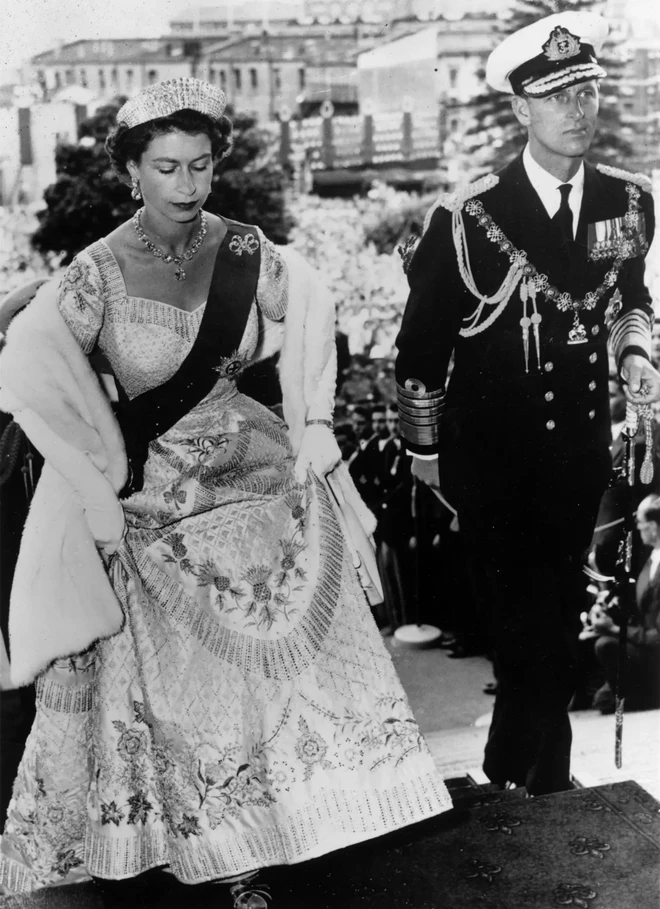
Although created for the coronation ceremony, Queen Elizabeth II did not wear the gown just once.
Lady Pamela Hicks, a cousin of Prince Philip, recounted that the Queen brought the gown with her on the royal tour around the world after the coronation. It even had its own room.
“The dress needed its own cabin. That cabin was a little bigger than mine. I was rather jealous,” the former royal lady-in-waiting said.
According to the official website of the royal family, Queen Elizabeth II wore the gown six times after the coronation, including wearing it for the opening of Parliament in Australia, New Zealand, and Ceylon (now Sri Lanka) in 1954, and a similar event in Canada four years later.
“By bringing the coronation gown to important events and widely publicized places, Queen Elizabeth tried to expand the coronation ceremony to a wider audience,” Harte commented.